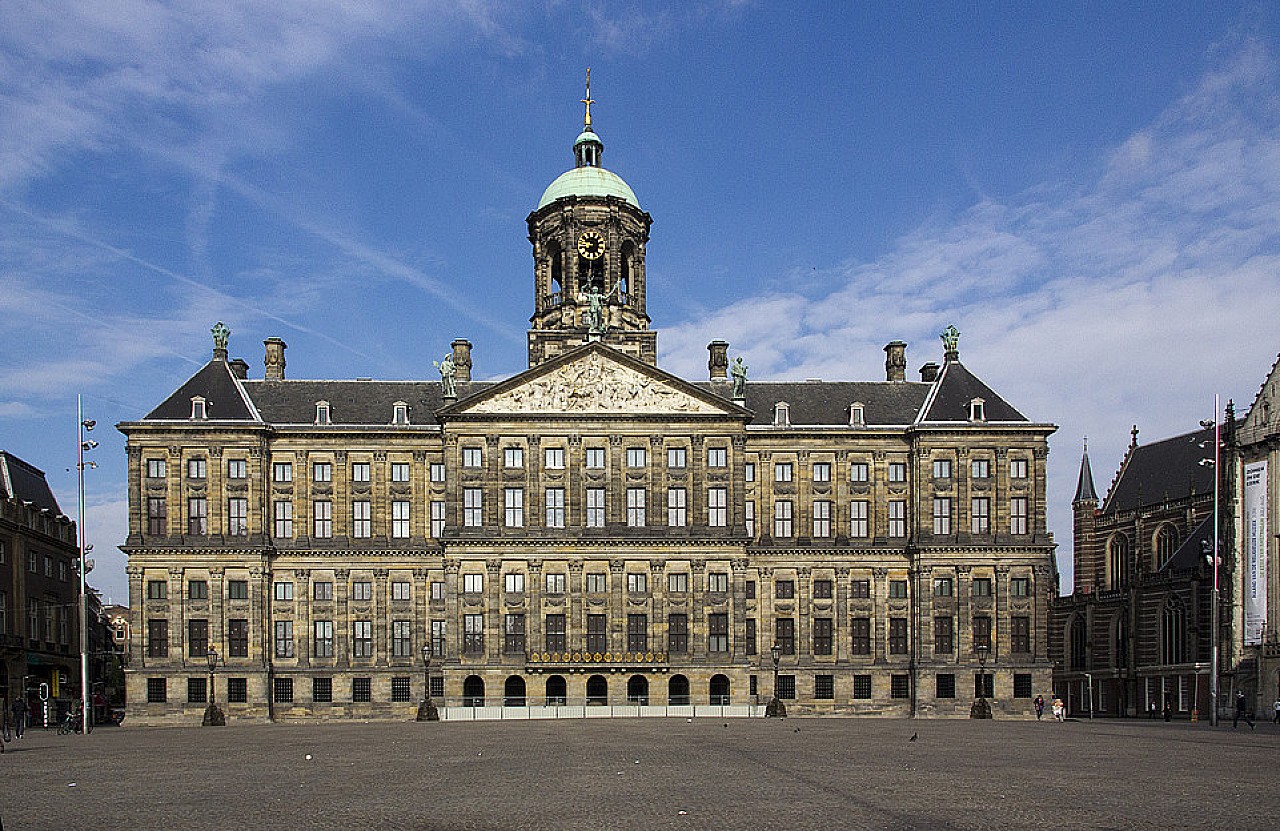


The Royal Palace in Amsterdam is one of three palaces in the Netherlands which are at the disposal of the monarch by Act of Parliament
Located in the heart of the Dutch capital, the magnificant Royal Palace is not only one of the Netherlands' most famous historical buildings, it is the only palace in the country that is both in active use and available for the public to visit. Visitors are welcome to discover an enchanting collection of artworks and furnischings, when the Palace is not in use by the Dutch Royal Family.
Visitors with special needs the building offers easy wheelchair access. The facilities include a lift, a wheelchair-accessible toilet, and wheelchairs for the use of visitors
The sandstone of yellowish hue has darkened considerably in the course of time. Astride the rear of the building is a 6-metre-tall statue of Atlas carrying the Globe on his shoulders. It symbolises the worldwide extent of 17th-century Dutch commerce and interests.
On top of the palace is a large domed cupola, topped by a weather vane in the form of a cog ship. This ship is a symbol of Amsterdam. Just underneath the dome there are a few windows. From here one could see the ships arrive and leave the harbour. In the cupola is the famous carillon by François and Pieter Hemony cast in 1664 in Amsterdam. It was renovated by Eijsbouts in 1965. Only 9 bells by François and Pieter Hemony remained. 38 new bells by Eijsbouts were made and tuned in meantone temperament. The old corroded Hemony bells are kept inside the palace.
The central hall is 120 feet long, 60 feet wide and 90 feet high. On the marble floor there are two maps of the world with a celestial hemisphere. The Western and Eastern hemispheres are shown on the maps. The hemispheres detail the area of Amsterdam's colonial influence. The terrestrial hemispheres were made in the mid-18th century. They replaced an earlier pair made in the late 1650s. The originals showed the regions explored by the Dutch East India Company's ships in the first half of the 17th century. This feature may have been inspired by the map of the Roman Empire that had been engraved on marble and placed in the Porticus Vipsania, a public building in ancient Rome.


Latest Reviews
-
Alisa Bracegirdle
16 Feb 2018
1.0

Parking: 4.0
Accessibility: 4.0
Toilets: 4.0
Staff: 5.0
Read All ReviewsThe place is wheelchair friendly and have ease of access everywhere. Wheel chair accessible toilets are also there. They have lifts to access different levels and they are big and can easily accommodate wheel chair. They also provide wheelchair which is free to use. Along with wheel chair friendly it is family friendly as well. Children under 18 get free entry. They also have a free Hidden Stories Family Tour. The location is walking distance from Central Station but there public transport too It’s just Accross TGE road from Damm Park Square. Staff and general support infrastructure superb